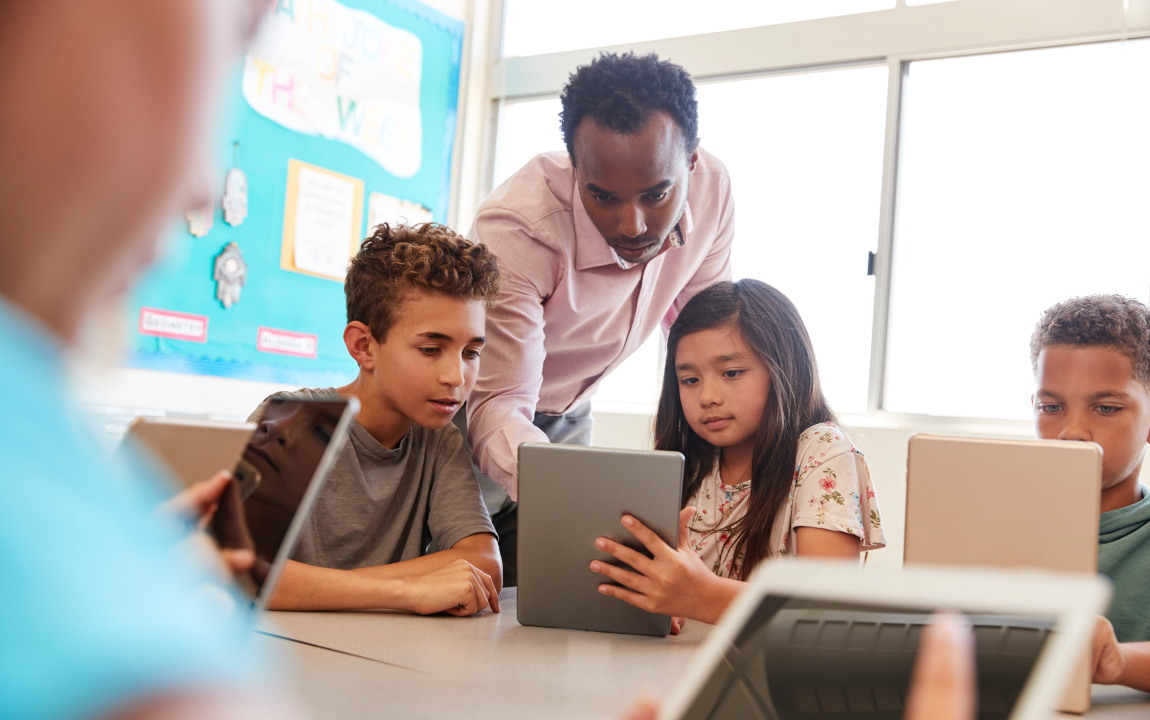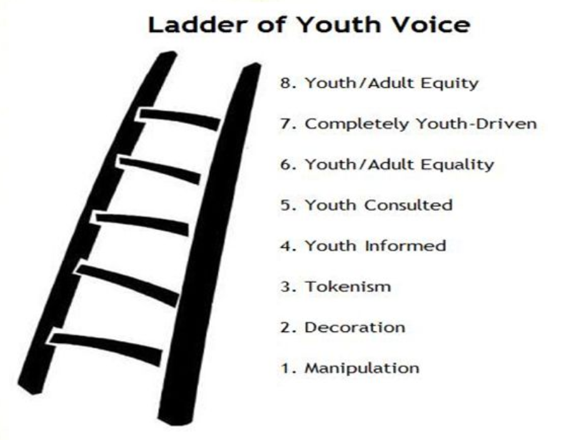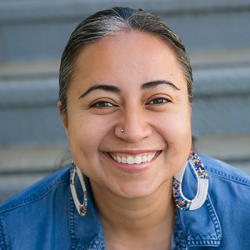
PBLWorks provides a model for Gold Standard PBL, with a set of Essential Project Design Elements and Project Based Teaching Practices. Our model doesn’t explicitly address the ways PBL can advance racial equity, so I’d like to offer seven teaching moves that will help educators make the connection between the two.
It's my hope that understanding the why behind these moves, as well as the how, will help create schools and classrooms that edge closer towards ensuring equitable outcomes, particularly for our Black and Latinx students.
7 Equity Moves for PBL
1. Spark engagement with student-generated questions
Essential Element: Sustained Inquiry
The best projects I’ve seen are those that are driven by student-generated questions. When students investigate topics they’re curious about or think are important, then identify the questions they need or want to answer, they are engaged and invested in the inquiry process. In traditional instruction, students are spoon-fed information. All students might find this approach to be disempowering, but students of color especially can experience this as another example of systemic oppression. It’s liberating in a PBL approach for students to be asked, What do you care about? What do you want to learn more about? What questions do you need to know the answer to?
2. Focus projects on issues of justice
Essential Element: Authenticity
Authentic projects lead to higher student engagement because students are doing work that matters, work that impacts their community, their lives, the lives of those they love and deeply care about. As National Teacher of the Year, Sydney Chaffee, says in her TED talk, social justice belongs in the classroom. I often hear educators say, “I don’t want to mix politics in the classroom.” However, I would argue that the very nature of choosing this profession is a political statement. Since education is one of the most important civil rights issues of our time, we are all allies in the fight for justice. R&B artist D’Angelo has a wonderful line in “Devil’s Pie” where he proclaims “ain’t no justice, just us.” Let’s embrace that powerful role and go beyond simply teaching the standards by providing our students with opportunities to become better people and act as change agents to make the world a better place.
3. Listen to the voices of students
Essential Element: Student Voice & Choice
Black and Latinx students are often walking into schools where their stories have already been written for them. We have to change this and give students authorship in sharing and telling their own stories, which a good project allows them to do. Student voice matters. It creates agency and leadership that will help build the culture for PBL. The graphic below is a good framework to consider in schools and classrooms. The bottom rungs of the ladder correspond to the “sage on the stage” (i.e., lecture) teaching methodology, where processing, challenging, and questioning by students are often not given importance—in contrast to PBL. Our goal is to reach the top of the ladder and truly include youth in an equitable way. Advancing youth voice is directly connected to advancing youth equity.

4. Build community through peer feedback
Essential Element: Critique and Revision
When students are given the opportunity during projects to frequently share feedback and revise their work, it creates moments to witness growth and progress. Providing meaningful feedback to each other allows students to contribute to a strong, supportive classroom culture, building the relationships and connection they need.
5. Create space for students to reflect
Essential Element: Reflection
Reflection is rare in traditional classrooms, where the emphasis is on urgency and doing assignments quickly. Sadly, this makes many schools unsafe places that can activate trauma and drain the energy out of our students. In this context, a fight or flight mode can be activated in our youth. They fight the system, or each other, or don’t show up for school. PBL flips this script by allowing these students to pause now and then, to stop and think about themselves, their ideas and questions, and how they feel about the project. The reflective PBL classroom culture can also be mirrored in a school-wide culture that brings socio-emotional learning to the forefront, such as with mindfulness practices in whatever shape they come: journaling, meditating, yoga, or connecting to nature.
6. Expect excellence
Teaching Practice: Build the Culture
A belief in excellence, demonstrated by setting high expectations, is the fuel that runs a successful PBL culture. This is the place where we need to actively dispel the myth that PBL does not work for those kids. PBL works for ALL kids. Ron Berger writes about the importance of excellence eloquently in his book An Ethic of Excellence: “It doesn’t matter what their background is. Once those children enter a culture with a powerful ethic – that ethic becomes their norm. It’s what they know.” The challenge lives in ensuring the proper scaffolding, knowing their current reality, to get your students towards the excellence they are capable of without lowering your expectations.
7. Create beautiful spaces
Essential Element: Public Product
For so many of our students, their communities and homes are not always beautiful places. They rent, they live in illegal units or public housing. Some share bedrooms with three siblings. Their neighborhoods are dumping grounds for illegal trash and there are no parks, and more liquor stores than grocery stores. Imagine the power then for these same students to be able to walk into a building made beautiful by displaying student work from projects. A school building that honors and celebrates high quality student work from the ceilings to the ground. A school building that turns every space including the restrooms into beautiful, colorful, warm spaces. It’s transformative and brings back life and energy.

